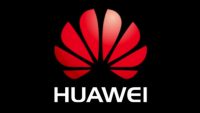Alphabet’s Google has ceased transfer of hardware, software and services — except those available via open source licensing — to Huawei Technologies. Broadcom, Intel, Qualcomm, and Xilinx have also obeyed the Trump administration’s order to freeze business with China’s largest technology company (based on potential threats to national security). This action will also likely impact U.S. tech companies such as chipmaker Micron Technology and other firms that depend on China for their own growth, as well as slow down the worldwide rollout of 5G networks.
Bloomberg reports, “Intel is the main supplier of server chips to the Chinese company, Qualcomm provides it with processors and modems for many of its smartphones, Xilinx sells programmable chips used in networking and Broadcom is a supplier of switching chips.”

Rosenblatt Securities analyst Ryan Koontz said that Huawei will be “seriously crippled without supply of key U.S. components … [and the ban] may cause China to delay its 5G network build … having an impact on many global component suppliers.” Huawei has reportedly stockpiled three month’s worth of chips and components since mid-2018.
“The extreme scenario of Huawei’s telecom network unit failing would set China back many years and might even be viewed as an act of war by China,” wrote Koontz. “Such a failure would have massive global telecom market implications.” In addition to becoming an obstacle to Huawei’s 5G ambitions, the freeze “deals a direct blow to Huawei’s fast-growing mobile devices division.”
Reuters reports that, according to Google, “holders of current Huawei smartphones with Google apps … will continue to be able to use and download app updates provided by Google,” including Google Play and Google Play Protect. But Huawei “will immediately lose access to updates to Google’s Android operating system … [and] future versions of Huawei smartphones that run on Android will also lose access to popular services, including the Google Play Store and Gmail and YouTube apps.” But most of Google’s mobile apps are already banned in China, with users relying on Tencent and Baidu for similar services.
Huawei will have access to the Android Open Source Project (AOSP) version available for free. The company reported that it has been developing its own technology as a “contingency plan,” and that some of this technology is being used in products sold in China. The U.S. Commerce Department stated last Friday that scaling back restrictions on Huawei is under consideration, to “prevent the interruption of existing network operations and equipment.”
Related:
As Huawei Loses Google, the U.S.-China Tech Cold War Gets Its Iron Curtain, The New York Times, 5/20/19
U.S. Tech Suppliers, Including Google, Restrict Dealings With Huawei After Trump Order, The New York Times, 5/20/19
U.S. Plans Temporary Exemptions to Huawei Blacklist, The Wall Street Journal, 5/20/19
Huawei Fires Back Against U.S. Ban After Google and Others Sever Ties, Digital Trends, 5/20/19
Ripples From Trump’s Huawei Crackdown Reach Mediterranean Shores, Bloomberg, 5/17/19

No Comments Yet
You can be the first to comment!
Sorry, comments for this entry are closed at this time.